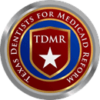 The Colorado Dental Association (CDA) announced at the end of April that Gov. Polis had signed the 2024/25 state budget, which includes $78 million in “meaningful reimbursement rate increases for Medicaid dental providers.”
The Colorado Dental Association (CDA) announced at the end of April that Gov. Polis had signed the 2024/25 state budget, which includes $78 million in “meaningful reimbursement rate increases for Medicaid dental providers.”
The increased fees schedule goes into effect July 1, 2024 (PDF file below).
Laying the groundwork for 18 months
The CDA announcement tells the story best:
This increase resulted from 18 months of work by the CDA Medicaid Task Force initially chaired by Dr. Carol Morrow in 2022/2023 and then Dr. Jeff Lodl and Dr. Garry Van Genderen in 2023/2024. The task force began its work in the fall of 2022 by investigating and prioritizing Medicaid provider concerns, in addition to comparing Colorado Medicaid rates with the rates in virtually every state in the nation. The task force prioritized the most meaningful rates for patient care and provider recruitment and retention, and testified at numerous hearings to advocate for rates to match the ADA Survey of Dental Fees benchmark.
After well over a year of work, 28 codes were approved for rate increases:
* 15 preventive, perio and endo codes* were increased to 100% of 2020 ADA Survey of Fees benchmark and
* 13 diagnostic and crown codes were increased to 70% of 2020 ADA Survey of Fees benchmark.
This is a huge win for access to care in our state thanks to the CDA Medicaid Task Force, CDA Government Relations Council and several key members of the Colorado Joint Budget Committee.
*Scaling/root planing, perio maintenance and endo codes were historically very poorly reimbursed. With these increases, we also aim to increase specialty provider participation.
In addition, a 2% rate increase will be implemented across all Medicaid provider types starting July 1, 2024.
Louisiana and Colorado state dental associations come through for their members
This is great news for Colorado Medicaid dentists and shows what a hard-working state dental association can do when it puts its mind to it. Just like what occurred in Louisiana recently when Medicaid dental rates were increased dramatically.
Comparison to Texas fee schedule
TDMR has compared some of the new Colorado rates with the current Texas TMHP rates.
D0120 – Periodic Oral Examination:
Texas Rate: $28.85
Colorado Rate: $38.35
Absolute Difference: $38.35 – $28.85 = $9.50
Percentage Difference: 32.93%
D0150 – Comprehensive Oral Evaluation:
Texas Rate: $35.32
Colorado Rate: $61.03
Absolute Difference: $61.03 – $35.32 = $25.71
Percentage Difference: 72.77%
D1110 – Adult Prophylaxis:
Texas Rate: $54.88
Colorado Rate: $97.50
Absolute Difference: $97.50 – $54.88 = $42.62
Percentage Difference: 77.67%
D1120 – Child Prophylaxis:
Texas Rate: $36.75
Colorado Rate: $73.04
Absolute Difference: $73.04 – $36.75 = $36.29
Percentage Difference: 98.75%
D1206 – Fluoride Varnish:
Texas Rate: $14.70
Colorado Rate: $41.96
Absolute Difference: $41.96 – $14.70 = $27.26
Percentage Difference: 185.44%
D1351 – Sealant, per tooth:
Texas Rate: $28.24
Colorado Rate: $57.10
Absolute Difference: $57.10 – $28.24 = $28.86
Percentage Difference: 102.19%
D1352 – Preventive Resin Restoration:
Texas Rate: $37.44
Colorado Rate: $99.32
Absolute Difference: $99.32 – $37.44 = $61.88
Percentage Difference: 165.24%
D1354 – Interim Caries Arresting Medicament, per tooth:
Texas Rate: $14.50
Colorado Rate: $54.53
Absolute Difference: $54.53 – $14.50 = $40.03
Percentage Difference: 276.07%
4,000 Texas dental providers sitting on the sidelines
These services are meant to keep Texas’s children healthy. Four thousand willing providers are sitting on the sidelines because of problems with Texas dental Medicaid.
A recent comment stated:
Getting Texas dentists back in the game of treating Medicaid patients is a goal that we all can support. As a former Medicaid provider, unfortunately that will not happen in my case. Listed below are a few reasons why – 1. Medicaid is a hotly political topic and MCO’s have immense political power and leverage, DSO’s and large providers have relative political power and individual providers have none. The individual providers and providers at large volume clinics hold all the risk. 2. Medicaid pays on quantity not quality. Providers are incentivized to work fast and do as much as possible instead of work to attain dental health with few billable dental codes. 3. The reimbursement for dental codes is ridiculously low. 4. The time involved in being a Medicaid provider, credentialing, billing, etc, is significant.
And that is just a start. If dentists could treat Medicaid patients in a manner that it was not a disruption to their office and bill/credential similar to private insurance, there would be very little reason not to believe that there would be a wide adoption of Medicaid as a part of the payer mix.
It is high-volume Medicaid dental providers at this time that keep treat the vast majority of Texas’s Medicaid-eligible children. They need help to keep this going.
Will it happen?

